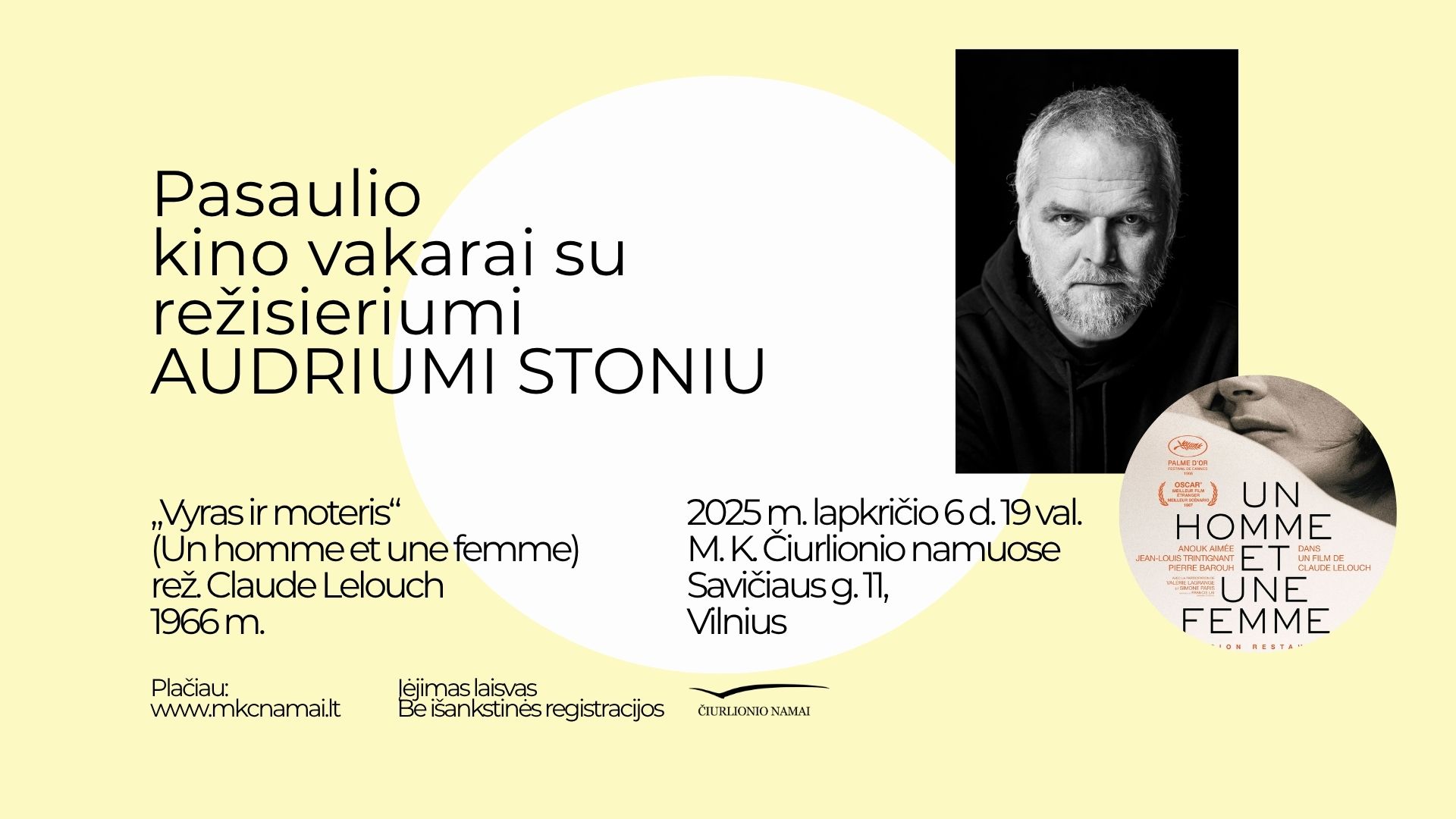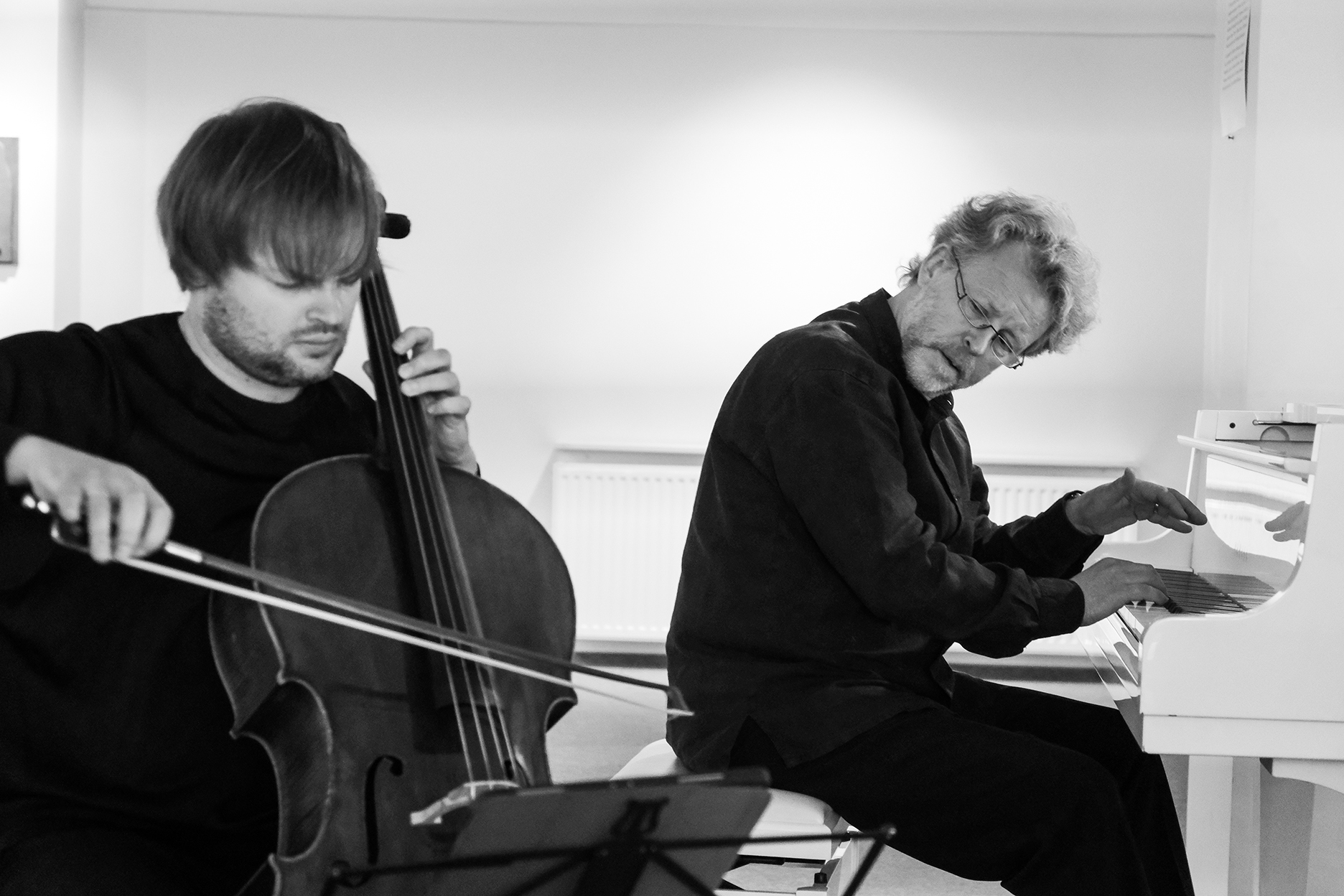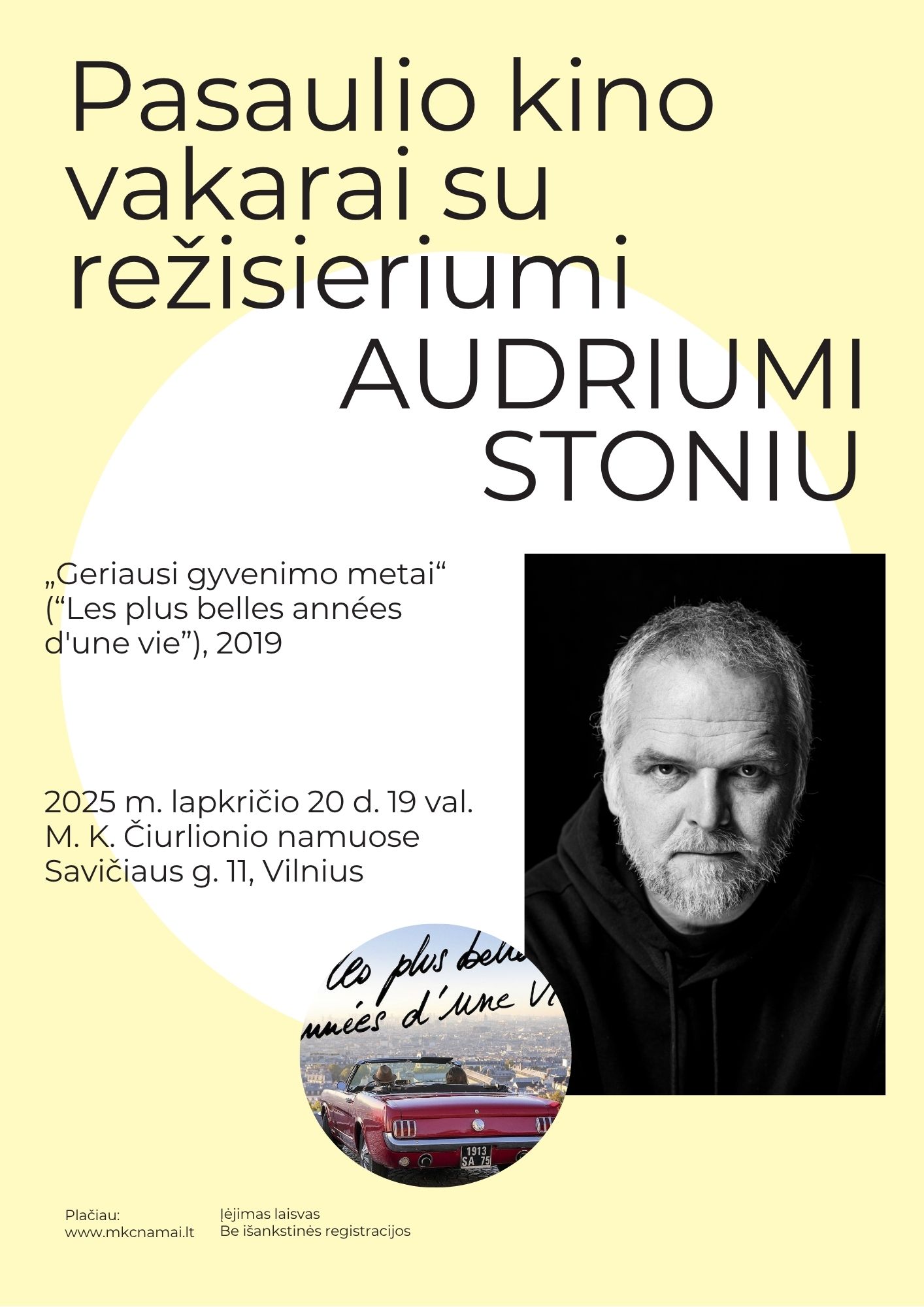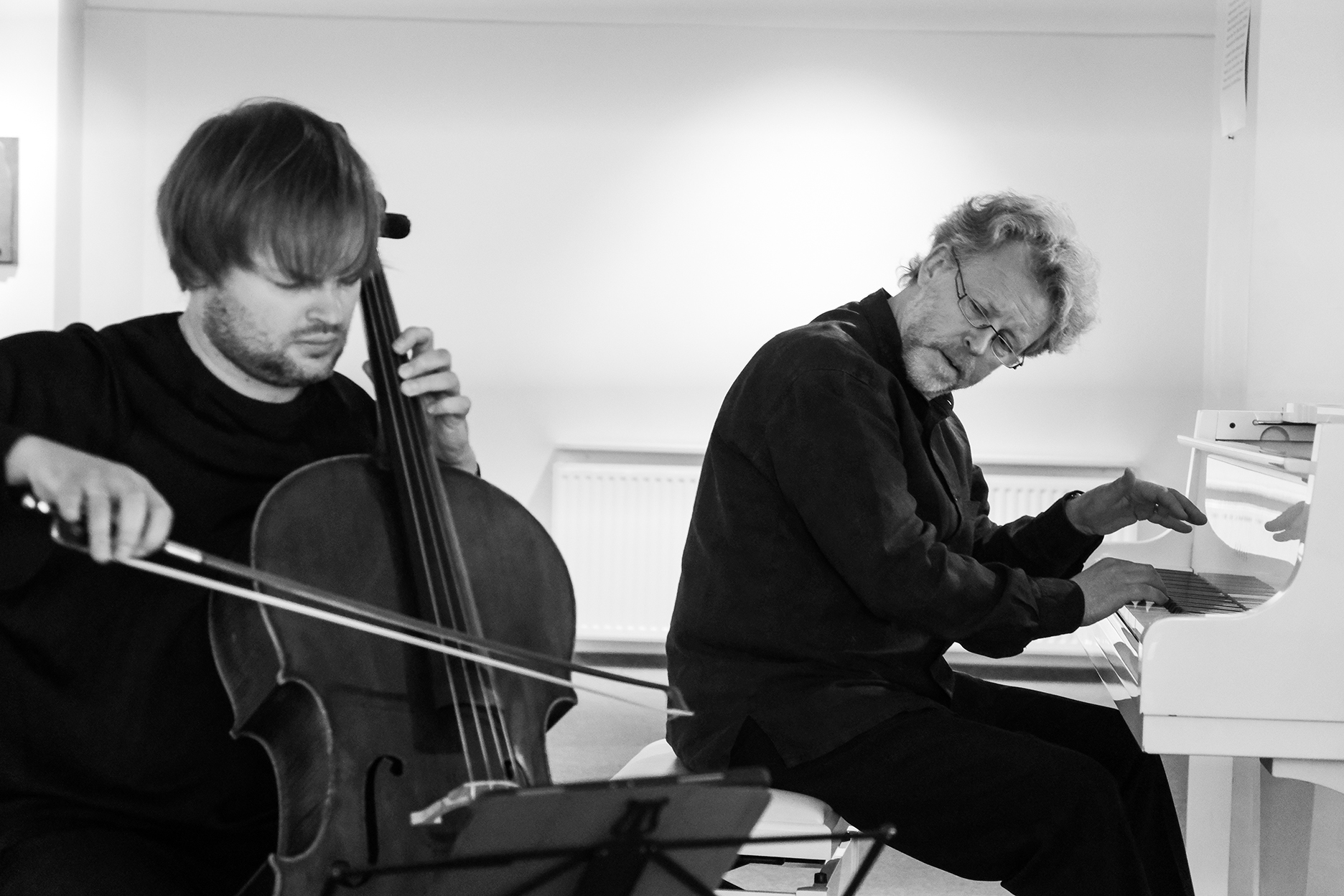VILNIUS, December 8th — This Wednesday, Estonian composer and violinist Mihkel Kerem and Lithuanian pianist Rokas Zubovas organised an important concert at the Vilnius Town Hall in occasion of the Vilnius 700 project, a long-term project to celebrate the 700th anniversary of Vilnius which will take place in 2023. The concert brought together around 150 people at Vilniaus Rotušė.

Rokas Zubovas and Mihkel Kerem
After playing pieces from well-known composers from the 19th and 20th century, such as Béla Bartók, Heino Eller, Leoš Janáček and Jean Sibelius, the two musicians played the composition ‘Without Saying Goodbye’ („Neatsisveikinęs“ in Lithuanian) that Mihkel Kerem, who has already composed over 160 pieces, created over lost musical sketches of the famed Lithuanian composer Mikalojus Konstantinas Čiurlionis who died in 1911.
The musician and painter M.K. Čiurlionis has been an important symbol of Lithuanian music and art, having participated in organising the first Exhibition of Lithuanian Art of 1907, among other events. He was also one of the 19 founders of the Lithuanian Art Society. Nowadays, Čiurlionis is regarded as a national artist and is a symbolic figure of Lithuanian art.
In a small side room of Vilnius Town Hall (Vilniaus Rotušė), Kerem and Zubovas get ready for their concert and discuss the event’s meaning.
Why was Vilniaus Rotušė chosen?
Indeed, the Town Hall was first mentioned in 1432; since then, it was rebuilt many times. The current building dates back to 1799. Today, it’s a representative monument of Lithuania, which is often visited by foreign officials, such as George W. Bush or Queen Elizabeth II.
“We’re back in this center where so much of history of Vilnius and Lithuania has happened and keeps happening,” added Kerem.
An exceptional concert
“I think this is quite a special concert because we also play other nationalist composers. All of them were trying to create their own unique musical language based on very specific national idioms, nature and dances. The whole program is, in a way, a map of Europe in the early 20thcentury,” remarked Rokas Zubovas.
The two musicians played various music from Hungary, Estonia, Czech Republic and Finland, covering most of Eastern Europe from the North to the South.

“Not only in their own language, with Czech music of course there was a huge musical culture before. But let’s look at Lithuania, Estonia or Finland as well; we didn’t have any musical culture — it was a national awakening,” continued Mihkel Kerem.
After so many years, the legacy persists
“It’s exceptional in a sense that still, after more than 110 years after Čiurlionis died, there is still new material that surfaces and new music compositions that are written on-top of it,” pondered Zubovas, the great-grandson of M.K. Čiurlionis. The pianist is very active in making a name for his great-grandfather.
Čiurlionis died on the 10th of April 1911 of pneumonia, at the age of 35 years old.
“About 15 years ago, a manuscript of Čiurlionis’ “Sonata for violin” was uncovered among papers of his younger sister Jadvyga Čiurlionytė. These sketches of Čiurlionis’ work were just sitting, waiting for someone to touch them. I then suggested to Mihkel to look at them because he was both a violinist and composer. So, I thought that maybe these sketches should be looked at by a composer who’s also a violinist,” explained Zubovas.
‘Without Saying Goodbye’: a complicated piece to rebuild
“The sketches are very sparse and clearly were being written as a piece. It feels like he had written a lot of it and that quite a large chunk of it was missing… such as the beginning. There is no kind of basic material to really complete the piece, and I had to do something else with it, to mature this wonderful music, so it could come out somehow,” the Estonian composer described ‘Without Saying Goodbye’.
Since 2012, this project was on the back of Mihkel Kerem’s mind, having met and played with Rokas Zubovas at a concert in Estonia.
“In this work that I created, I made it into like a little ‘pedestal’ to bring these bits of genius out from the page. Because to play them as they are there really feels like you’re playing the composer’s rough thoughts and can’t present it like this. Some of it is great, some of it is really complete and… a lot of it is just two notes, four chords, something messed up, something missing. But I used all of it, and so I wrote kind of my own piece around it as like a cushion to support his work,” clarified Mihkel Kerem.
A piece with historical value
“Here we’re talking about something that was written in the late 19th century: approximately around 1897-1898, nobody knows exactly, because small sketches are all we have. Which historically would make it the very first Lithuanian chamber-sonata,” explained the Lithuanian pianist.
Historically, the first Lithuanian chamber-sonata, a musical composition usually comprised of four movements and is commonly played at secular events, was composed by Juozas Gruodis with his ‘Sonata for violin and piano in D minor’ written in 1922. If completed 25 years earlier, this piece made by Čiurlionis, would have been the first.
“I suppose that makes Čiurlionis very special, a piece that- if it would have been completed -would have been the first, is premiered 125 years later,” concluded Kerem.
‘Without Saying Goodbye’ — living beyond the grave as an artist
“I imagine this as a link between his youth because the piece was written when he was very young. But also it is the very end of his life, because it feels that there are bits that you just remember from his earlier life; it’s still a very tragic way he died, it’s a problematic thing isn’t it? So it represents his life that was cut short and also that he couldn’t say ‘goodbye’ or even ‘hello’ to his little daughter that he never saw,” said Kerem justifying the name of the piece.
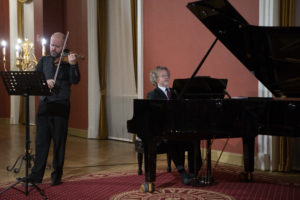
Unfortunately, Čiurlionis never saw his daughter Danutė, who was born on June 12th1910. At the time, he was held at the “Czerwony Dwór” (Red Manor) hospital near Warsaw, where he caught a cold and died shortly after of pneumonia, on the April 10th 1911.
“People or composers and artists like Čiurlionis really don’t plan to die, and leave quite a lot to finish for the future generations. So, it is as if they’re never saying ‘goodbye’. You’re still finding things as if he just left the room and came back. His musical list of compositions becomes fuller and fuller even though he’s been dead for more than a hundred years,” wrapped up Rokas Zubovas.
—for The Lithuania Tribune by Lukas BARBIER (www.lukasbarbier.com)



